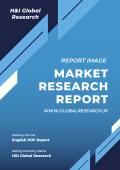目次
第1章. グローバル海洋人工知能市場 概要
1.1. グローバル海洋AI市場規模と予測(2022–2032)
1.2. 地域別概要
1.3. セグメント別概要
1.3.1. 構成要素別
1.3.2. 技術別
1.3.3. 用途別
1.3.4. 展開方法別
1.3.5. 用途別
1.4. 主要な動向
1.5. 不況の影響
1.6. 分析家の推奨事項と結論
第2章. グローバル海洋人工知能市場定義と研究仮定
2.1. 研究目的
2.2. 市場定義
2.3. 研究仮定
2.3.1. 対象範囲と除外項目
2.3.2. 制限事項
2.3.3. 供給側分析
2.3.3.1. 供給可能性
2.3.3.2. インフラストラクチャ
2.3.3.3. 規制環境
2.3.3.4. 市場競争
2.3.3.5. 経済的実現可能性(顧客の視点)
2.3.4. 需要側分析
2.3.4.1. 規制枠組み
2.3.4.2. 技術的進歩
2.3.4.3. 環境要因
2.3.4.4. 顧客の認識と受け入れ
2.4. 推定手法
2.5. 調査対象期間
2.6. 通貨換算レート
第3章. グローバル海洋人工知能市場動向
3.1. 市場ドライバー
3.1.1. デジタル最適化と自律型オペレーション
3.1.2. IoT、エッジコンピューティング、およびビッグデータとの統合
3.1.3. 状況認識と排出量削減の需要
3.2. 市場課題
3.2.1. 統合の複雑さと高い資本支出
3.2.2. 分散した規制環境
3.2.3. 労働力の抵抗とデータセキュリティの懸念
3.3. 市場機会
3.3.1. 官民イノベーションパートナーシップ
3.3.2. デジタルツイン技術の採用
3.3.3. 海運物流向けスケーラブルなSaaS AIプラットフォーム
第4章. グローバル海運AI市場産業分析
4.1. ポーターの5つの力モデル
4.1.1. 供給者の交渉力
4.1.2. 購入者の交渉力
4.1.3. 新規参入の脅威
4.1.4. 代替品の脅威
4.1.5. 競合企業の競争
4.1.6. ポーターのモデルへの未来志向的なアプローチ
4.1.7. ポーターのモデルの影響分析
4.2. PESTEL分析
4.2.1. 政治
4.2.2. 経済的
4.2.3. 社会
4.2.4. 技術的
4.2.5. 環境
4.2.6. 法的
4.3. 主要な投資機会
4.4. 主要な成功戦略
4.5. 破壊的トレンド
4.6. 業界専門家見解
4.7. アナリストの推奨事項と結論
第5章. グローバル海洋人工知能市場規模と予測(コンポーネント別)、2022–2032
5.1. セグメントダッシュボード
5.2. ハードウェア売上高の動向分析、2022年と2032年
5.3. ソフトウェア売上高の動向分析(2022年と2032年)
第6章. グローバル海洋人工知能市場規模と技術別予測(2022年~2032年)
6.1. セグメントダッシュボード
6.2. 機械学習の売上動向分析、2022年と2032年
6.3. コンピュータビジョン売上動向分析、2022年と2032年
6.4. 自然言語処理(NLP)の売上動向分析、2022年および2032年
6.5. 予測分析の売上動向分析、2022年と2032年
6.6. その他の技術 売上動向分析、2022年および2032年
第7章. グローバル海洋人工知能市場規模と予測(アプリケーション別)、2022年~2032年
7.1. セグメントダッシュボード
7.2. 艦隊管理の売上動向分析、2022年および2032年
7.3. 自動航行の収益動向分析、2022年および2032年
7.4. 海上監視・セキュリティの売上動向分析、2022年および2032年
7.5. スマート港湾運営の売上動向分析、2022年と2032年
7.6. 航法とルート最適化 収益動向分析、2022年と2032年
7.7. 予測メンテナンスの収益動向分析、2022年と2032年
7.8. その他の応用分野の収益動向分析、2022年および2032年
第8章. グローバル海運人工知能市場規模と予測(展開別)、2022–2032
8.1. セグメントダッシュボード
8.2. クラウド展開別売上高動向分析、2022年および2032年
8.3. オンプレミス展開の売上動向分析、2022年および2032年
第9章. グローバル海運人工知能市場規模と予測(用途別)、2022–2032
9.1. セグメントダッシュボード
9.2. 商用船舶の収益動向分析、2022年と2032年
9.3. 海軍および防衛分野の売上高動向分析、2022年および2032年
9.4. 港湾管理の売上動向分析、2022年および2032年
9.5. 石油・ガス部門の売上高動向分析、2022年と2032年
9.6. 水産物収入動向分析、2022年および2032年
9.7. その他の最終用途の収入動向分析、2022年および2032年
第10章. グローバル海洋人工知能市場規模と地域別予測(2022年~2032年)
10.1. 北米市場
10.1.1. アメリカ市場
10.1.2. カナダ市場
10.2. 欧州市場
10.2.1. イギリス市場
10.2.2. ドイツ市場
10.2.3. フランス市場
10.2.4. スペイン市場
10.2.5. イタリア市場
10.2.6. 欧州その他の市場
10.3. アジア太平洋市場
10.3.1. 中国市場
10.3.2. インド市場
10.3.3. 日本市場
10.3.4. オーストラリア市場
10.3.5. 韓国市場
10.3.6. アジア太平洋地域その他の市場
10.4. ラテンアメリカ市場
10.4.1. ブラジル市場
10.4.2. メキシコ市場
10.5. 中東・アフリカ市場
10.5.1. サウジアラビア市場
10.5.2. 南アフリカ市場
10.5.3. 中東・アフリカその他の市場
第11章 競合分析
11.1. 主要企業のSWOT分析
11.1.1. IBMコーポレーション
11.1.2. BAEシステムズ
11.1.3. オルカAI
11.2. 主要な市場戦略
11.3. 企業プロファイル
11.3.1. IBMコーポレーション
11.3.1.1. 主要情報
11.3.1.2. 概要
11.3.1.3. 財務(データ入手可能性に依存)
11.3.1.4. 製品概要
11.3.1.5. 市場戦略
11.3.2. BAEシステムズ
11.3.3. オルカAI
11.3.4. ワルツィラ
11.3.5. 富士通
11.3.6. ABB
11.3.7. ハネウェル・インターナショナル・インク
11.3.8. コンスバーグ・グループ
11.3.9. Alphabet Inc.(Google Cloud)
11.3.10. ロールス・ロイス・ホールディングス
11.3.11. マイクロソフト・コーポレーション
11.3.12. パランティール・テクノロジーズ
11.3.13. ゼネラル・エレクトリック(GE)
11.3.14. SAP SE
11.3.15. シスコ・システムズ・インク
第12章 研究プロセス
12.1. 研究プロセス
12.1.1. データマイニング
12.1.2. 分析
12.1.3. 市場推定
12.1.4. 検証
12.1.5. 公開
12.2. 研究属性
12.2. 研究の属性
表の一覧
表1. グローバル海洋AI市場、報告範囲
表2. グローバル海洋AI市場の見積もりおよび予測(地域別、2022–2032年)(USD億ドル)
表3. グローバル海洋AI市場規模推計と予測(コンポーネント別、2022年~2032年)(USD億ドル)
表4. グローバル海洋AI市場規模予測(技術別)2022–2032年(億米ドル)
表5. グローバル海洋AI市場規模予測(2022~2032年、USD億ドル)
表6. グローバル海洋AI市場規模予測(展開別)2022–2032年(億米ドル)
表7. グローバル海洋AI市場規模推計と予測(用途別)2022–2032年(億ドル)
表8. グローバル海洋AI市場セグメント別推計と予測、2022–2032年(USD億ドル)
表9. 米国海運AI市場規模推計と予測、2022–2032年(USD億ドル)
表10. カナダ海運AI市場の見積もりおよび予測、2022–2032年(USD億ドル)
表11. イギリス海運AI市場の見積もりおよび予測、2022–2032年(USD億ドル)
表12. ドイツの海洋AI市場推定値と予測、2022–2032年(USD億ドル)
表13. 中国の海洋AI市場推定値と予測、2022–2032年(USD億ドル)
表14. インドの海洋AI市場規模推計と予測(2022~2032年、億米ドル)
表15. ブラジル 海事AI市場の見積もりおよび予測、2022–2032年(USD億ドル)
表16. メキシコ海事AI市場の見積もりおよび予測、2022–2032年(USD億ドル)
表17. サウジアラビアの海洋AI市場推定値と予測、2022–2032年(USD億ドル)
表18. 南アフリカ 海事AI市場の見積もりおよび予測、2022–2032(USD億ドル)
…(詳細な表は報告書本文に100件以上掲載)
図表一覧
図1. グローバル海事AI市場、研究手法
図2. グローバル海運AI市場、市場推計手法
図3. グローバル市場規模の推定方法と予測手法
図4. グローバル海洋AI市場、2023年の主要な動向
図5. グローバル海洋AI市場、成長見通し(2022年~2032年)
図6. グローバル海洋AI市場、ポーターの5つの力モデル
図7. グローバル海洋AI市場、PESTEL分析
図8. グローバル海洋AI市場、バリューチェーン分析
図9. 海洋AI市場(コンポーネント別)、2022年と2032年(USD億ドル)
図10. 海洋AI市場(技術別)、2022年と2032年(USD億ドル)
図11. 海洋AI市場(用途別)、2022年と2032年(USD億ドル)
図12. 海洋AI市場(展開別)、2022年と2032年(USD億ドル)
図13. 海洋AI市場(用途別)、2022年と2032年(億ドル)
図14. グローバル海事AI市場、地域別概要 2022年と2032年
図15. 北米海運AI市場 2022年と2032年(億ドル)
図16. 欧州海運AI市場 2022年と2032年(億ドル)
図17. アジア太平洋地域 海事AI市場 2022年と2032年(億ドル)
図18. ラテンアメリカ海運AI市場 2022年と2032年(億米ドル)
図19. 中東・アフリカ 海事AI市場 2022年と2032年(USD億ドル)
図20. グローバル海運AI市場、企業別市場シェア分析(2023年)
…(詳細な図表は報告書本文に50件以上掲載)
Chapter 1. Global Maritime Artificial Intelligence Market Executive Summary
1.1. Global Maritime AI Market Size & Forecast (2022–2032)
1.2. Regional Summary
1.3. Segmental Summary
1.3.1. By Component
1.3.2. By Technology
1.3.3. By Application
1.3.4. By Deployment
1.3.5. By End Use
1.4. Key Trends
1.5. Recession Impact
1.6. Analyst Recommendation & Conclusion
Chapter 2. Global Maritime Artificial Intelligence Market Definition and Research Assumptions
2.1. Research Objective
2.2. Market Definition
2.3. Research Assumptions
2.3.1. Inclusion & Exclusion
2.3.2. Limitations
2.3.3. Supply Side Analysis
2.3.3.1. Availability
2.3.3.2. Infrastructure
2.3.3.3. Regulatory Environment
2.3.3.4. Market Competition
2.3.3.5. Economic Viability (Customer Perspective)
2.3.4. Demand Side Analysis
2.3.4.1. Regulatory Frameworks
2.3.4.2. Technological Advancements
2.3.4.3. Environmental Considerations
2.3.4.4. Customer Awareness & Acceptance
2.4. Estimation Methodology
2.5. Years Considered for the Study
2.6. Currency Conversion Rates
Chapter 3. Global Maritime Artificial Intelligence Market Dynamics
3.1. Market Drivers
3.1.1. Digital Optimization and Autonomous Operations
3.1.2. Integration with IoT, Edge Computing & Big Data
3.1.3. Demand for Situational Awareness and Emissions Reduction
3.2. Market Challenges
3.2.1. Integration Complexities and High CapEx
3.2.2. Fragmented Regulatory Environment
3.2.3. Workforce Hesitance and Data Security Concerns
3.3. Market Opportunities
3.3.1. Public–Private Innovation Partnerships
3.3.2. Adoption of Digital Twin Technologies
3.3.3. Scalable SaaS AI Platforms for Maritime Logistics
Chapter 4. Global Maritime Artificial Intelligence Market Industry Analysis
4.1. Porter’s Five Forces Model
4.1.1. Bargaining Power of Suppliers
4.1.2. Bargaining Power of Buyers
4.1.3. Threat of New Entrants
4.1.4. Threat of Substitutes
4.1.5. Competitive Rivalry
4.1.6. Futuristic Approach to Porter’s Model
4.1.7. Porter’s Model Impact Analysis
4.2. PESTEL Analysis
4.2.1. Political
4.2.2. Economic
4.2.3. Social
4.2.4. Technological
4.2.5. Environmental
4.2.6. Legal
4.3. Top Investment Opportunities
4.4. Top Winning Strategies
4.5. Disruptive Trends
4.6. Industry Expert Perspectives
4.7. Analyst Recommendation & Conclusion
Chapter 5. Global Maritime Artificial Intelligence Market Size & Forecasts by Component, 2022–2032
5.1. Segment Dashboard
5.2. Hardware Revenue Trend Analysis, 2022 & 2032
5.3. Software Revenue Trend Analysis, 2022 & 2032
Chapter 6. Global Maritime Artificial Intelligence Market Size & Forecasts by Technology, 2022–2032
6.1. Segment Dashboard
6.2. Machine Learning Revenue Trend Analysis, 2022 & 2032
6.3. Computer Vision Revenue Trend Analysis, 2022 & 2032
6.4. Natural Language Processing Revenue Trend Analysis, 2022 & 2032
6.5. Predictive Analytics Revenue Trend Analysis, 2022 & 2032
6.6. Other Technologies Revenue Trend Analysis, 2022 & 2032
Chapter 7. Global Maritime Artificial Intelligence Market Size & Forecasts by Application, 2022–2032
7.1. Segment Dashboard
7.2. Fleet Management Revenue Trend Analysis, 2022 & 2032
7.3. Autonomous Shipping Revenue Trend Analysis, 2022 & 2032
7.4. Maritime Surveillance & Security Revenue Trend Analysis, 2022 & 2032
7.5. Smart Port Operations Revenue Trend Analysis, 2022 & 2032
7.6. Navigation & Route Optimization Revenue Trend Analysis, 2022 & 2032
7.7. Predictive Maintenance Revenue Trend Analysis, 2022 & 2032
7.8. Other Applications Revenue Trend Analysis, 2022 & 2032
Chapter 8. Global Maritime Artificial Intelligence Market Size & Forecasts by Deployment, 2022–2032
8.1. Segment Dashboard
8.2. Cloud Deployment Revenue Trend Analysis, 2022 & 2032
8.3. On-Premise Deployment Revenue Trend Analysis, 2022 & 2032
Chapter 9. Global Maritime Artificial Intelligence Market Size & Forecasts by End Use, 2022–2032
9.1. Segment Dashboard
9.2. Commercial Shipping Revenue Trend Analysis, 2022 & 2032
9.3. Naval and Defense Revenue Trend Analysis, 2022 & 2032
9.4. Port Management Revenue Trend Analysis, 2022 & 2032
9.5. Oil & Gas Revenue Trend Analysis, 2022 & 2032
9.6. Fisheries Revenue Trend Analysis, 2022 & 2032
9.7. Other End Uses Revenue Trend Analysis, 2022 & 2032
Chapter 10. Global Maritime Artificial Intelligence Market Size & Forecasts by Region, 2022–2032
10.1. North America Market
10.1.1. U.S. Market
10.1.2. Canada Market
10.2. Europe Market
10.2.1. UK Market
10.2.2. Germany Market
10.2.3. France Market
10.2.4. Spain Market
10.2.5. Italy Market
10.2.6. Rest of Europe Market
10.3. Asia Pacific Market
10.3.1. China Market
10.3.2. India Market
10.3.3. Japan Market
10.3.4. Australia Market
10.3.5. South Korea Market
10.3.6. Rest of Asia Pacific Market
10.4. Latin America Market
10.4.1. Brazil Market
10.4.2. Mexico Market
10.5. Middle East & Africa Market
10.5.1. Saudi Arabia Market
10.5.2. South Africa Market
10.5.3. Rest of Middle East & Africa Market
Chapter 11. Competitive Intelligence
11.1. Key Company SWOT Analysis
11.1.1. IBM Corporation
11.1.2. BAE Systems
11.1.3. Orca AI
11.2. Top Market Strategies
11.3. Company Profiles
11.3.1. IBM Corporation
11.3.1.1. Key Information
11.3.1.2. Overview
11.3.1.3. Financial (Subject to Data Availability)
11.3.1.4. Product Summary
11.3.1.5. Market Strategies
11.3.2. BAE Systems
11.3.3. Orca AI
11.3.4. Wärtsilä
11.3.5. Fujitsu
11.3.6. ABB
11.3.7. Honeywell International Inc.
11.3.8. Kongsberg Gruppen
11.3.9. Alphabet Inc. (Google Cloud)
11.3.10. Rolls-Royce Holdings
11.3.11. Microsoft Corporation
11.3.12. Palantir Technologies
11.3.13. General Electric (GE)
11.3.14. SAP SE
11.3.15. Cisco Systems Inc.
Chapter 12. Research Process
12.1. Research Process
12.1.1. Data Mining
12.1.2. Analysis
12.1.3. Market Estimation
12.1.4. Validation
12.1.5. Publishing
12.2. Research Attributes
❖ 免責事項 ❖
http://www.globalresearch.jp/disclaimer












